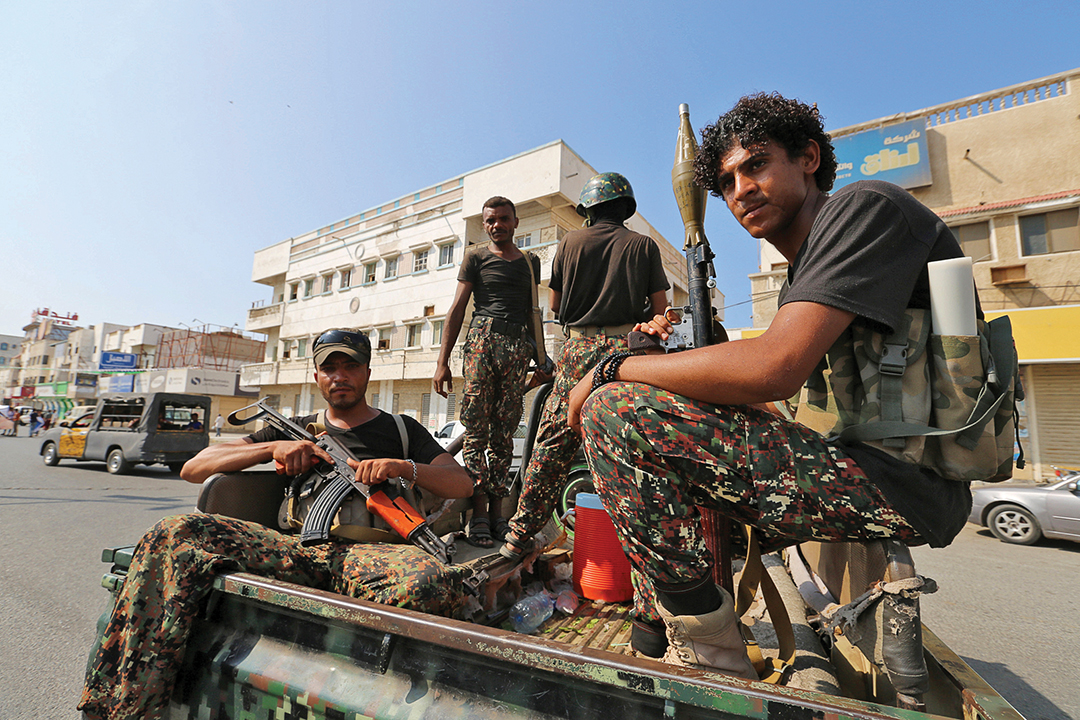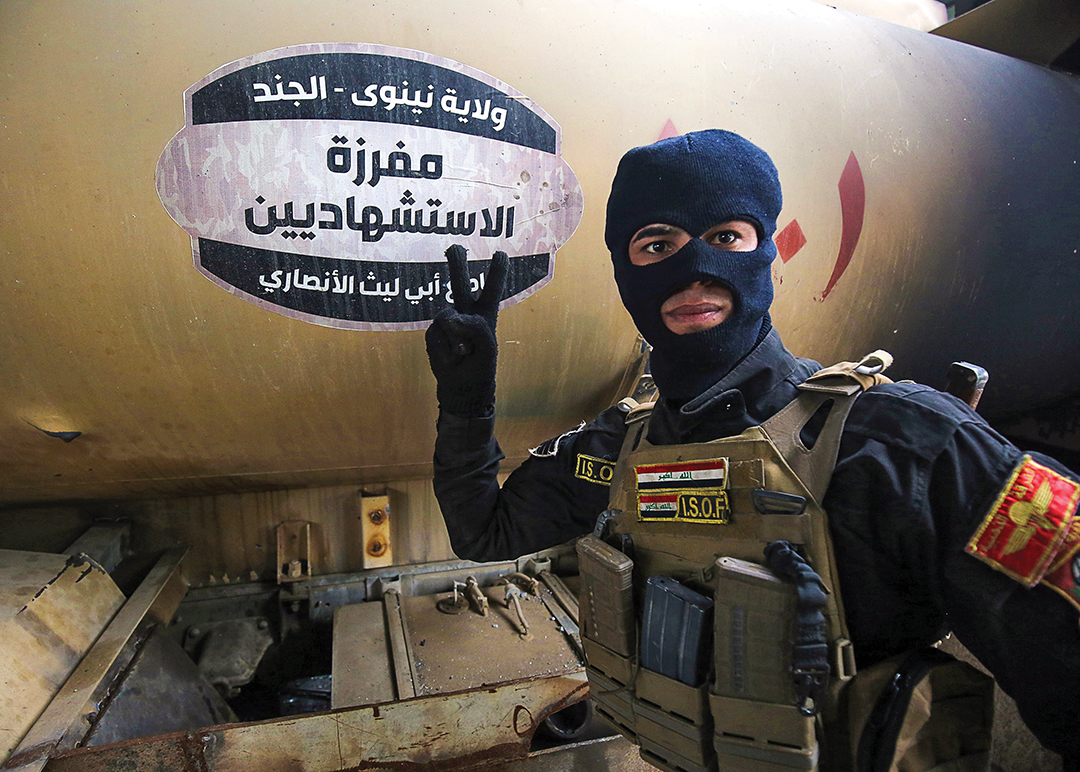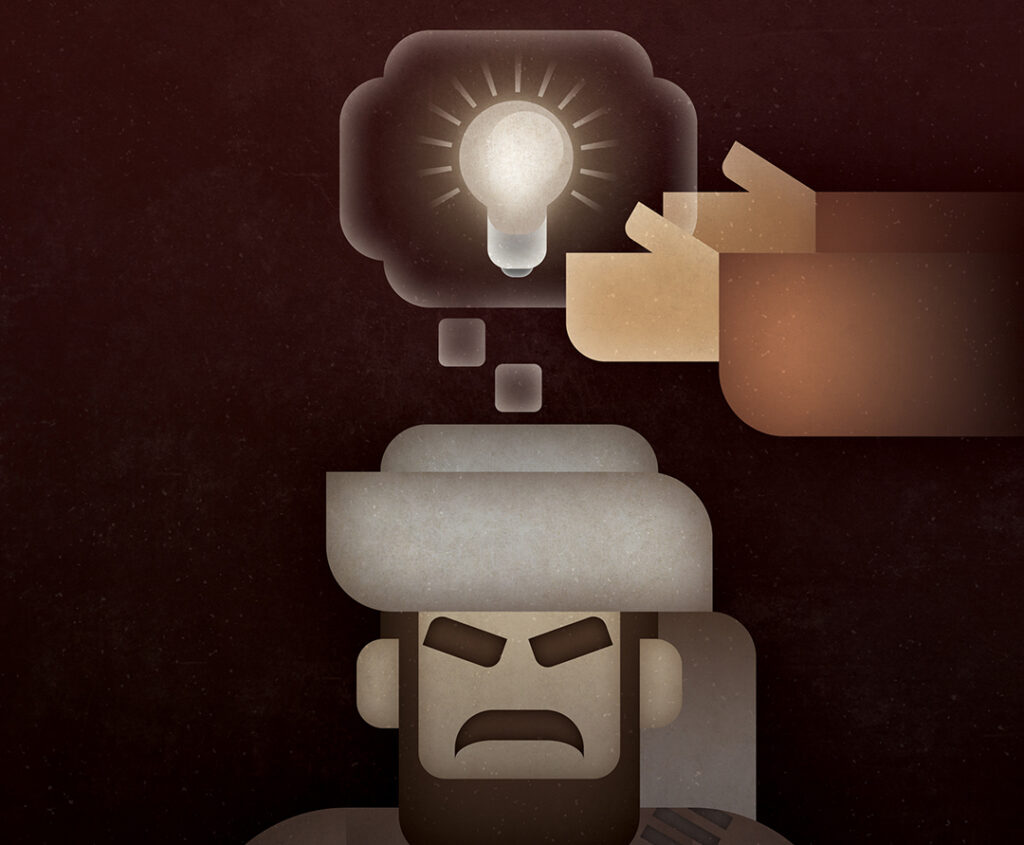ISLAMIC MILITARY COUNTER TERRORISM COALITION
Warfare has changed over the ages, beginning with the creation of professional armies in the 1600s. The 20th century saw the birth of a particular type of modern combat: guerrilla warfare. Guerrillas are armed groups that challenge the authority of regular armies using hit-and-run attacks to avoid direct combat with what they assume will be superior forces.
It is no surprise that terrorist groups gravitate toward the guerrilla warfare model. Daesh, which claimed to have set up a “state” in Syria and in parts of Iraq, reverted to guerrilla methods once the international coalition expelled the group from its base of operations in Mosul. By 2018, Daesh was at once bombing civilians, planting improvised explosive devices (IED) and trying to assassinate opponents.
The deeply ingrained relationship between terrorists and guerrilla warfare — and its threat to security, stability and peace — was the main topic at a March 2021 symposium at the Islamic Military Counter Terrorism Coalition (IMCTC) Center in Riyadh, Saudi Arabia. Hosts of the conference were Brig. Gen. Yahya Mohammed Asiri, Saudi delegate to the IMCTC, and Lt. Col. Zaki Yahya Al-Rawahi, Omani delegate to the IMCTC.

Definitions
Col. Al-Rawahi explained that guerrilla warfare means one of the parties to a conflict enlists irregular soldiers to attack enemies whenever a favorable opportunity arises and escapes to a safe haven. In other words, it usually entails unconventional war between an ideologically motivated group and an established conventional army.
Guerrillas consist of small combat units less well armed than the traditional armies they face. When it comes to fighting, these irregular units favor stealthy attacks at carefully chosen locations meant to inflict maximum pain and disruption on their opponents.
The Omani colonel clarified the differences between guerrilla warfare and conflicts with which it shares similarities, such as civil war, popular resistance, revolution, insurrection and insurgency.
A civil war is a conflict usually conducted between two groups of roughly equal strength. Popular resistance is a spontaneous and unorganized uprising to resist an occupying army, such as the Algerian reaction to French colonialism in the 1950s. A revolution is a major political event that can result in the overthrow of a government. Insurrection and insurgency are aggressive acts contrary to the laws of a state.
Guerrilla warfare consists of four elements, according to Gen. Asiri. The first element is strategic — guerrillas operate with ideological and political aspirations, avoid direct military action, seek support at home and abroad, and aim at an advantageous political settlement.

AFP/Getty Images
The next element is tactical. Guerrillas favor ambushes and raids. Their aim is stubborn resistance, not immediate victory. They rely on clandestine movements, mix with the local population, operate from temporary bases, and hide food and ammunition caches. They reequip themselves with spoils from successful operations.
Recognizing their relative weakness in the face of national armies, guerrillas try to compensate by adopting advanced technology. That is the third element of guerrilla warfare. This focus on technology is apparent in modern guerrillas’ use of cellphones, the internet and drones.
The last element of guerrilla warfare is intense planning. Their fighters employ strategy, tactics and technology at the proper times and in the proper places to advance their goals.
A close relationship
Guerrillas share many characteristics with terrorist groups from the perspective of ideology, information, financing and military organization. Terrorists and guerrillas recognize that humans are rational, social beings influenced by those around them. They realize the need for influential, persuasive and charismatic leaders to sway people to their cause.
Terrorist groups — like guerrilla groups — often start small and balloon in size. They spread their ideas among target groups by employing media propaganda; they broadcast resonating speeches that stimulate emotions and stage small operations to promote delusional bravado to recruit new followers.
Financial support is critical for guerrillas and terrorists. It is the basis for their expansion and control. Therefore, terrorists and guerrillas form alliances with organized criminal gangs to raise money through illegal means, despite their different orientations and goals.
Daesh’s rise illustrated the use of these guerrilla methods. Gen. Asiri noted how the terror group’s late leader, Abu Bakr al-Baghdadi, employed distorted religious discourse to rouse his followers. Daesh used social media and even video games to transmit its messaging. It raised money by smuggling oil in Iraq and Syria. When its forces were depleted, it improvised like guerrillas by recruiting children and seizing weapons from government forces.
Boko Haram in Nigeria also has used religious discourse as an ideological support and exploited the media to promote itself. It has financed its operations by selling ivory, gold and diamonds, recruited children and attacked government forces to capture military equipment.
The same was true of al-Qaida. It exploited religion and social media for its purposes, aided by the experiences of affiliated warriors who conducted guerrilla-style training in Afghanistan.
Lessons learned
The symposium concluded with a recitation of lessons learned from the fight against terrorists. In light of terrorists’ use of guerrilla methods, Col. Al-Rawahi suggested conventional forces and national militaries adopt the following:
Develop cutting-edge combat tactics for use against guerrilla fighters, tailoring training to the geographical terrains in which they operate, be they mountains, jungles, deserts or cities.
Devise defensive and offensive joint operations plans against terrorist groups that employ guerrilla warfare.
Coordinate operations and encourage information sharing between militaries and nonmilitary security forces.
Improve cooperation among competent authorities in brotherly and friendly countries to share counterterrorism experiences.
Develop rules of engagement for use against terrorists during the training of military forces.
Promote leaders with expertise in irregular warfare who can operate jointly with military and security partners.
The IMCTC symposium stressed that terrorist groups that adopt guerrilla warfare methods are running against the course of history — they aim to destabilize international peace and security and weaken the foundation on which modern states are founded. Aided by their nefarious ideologies, such groups have instigated conflicts that will end with their demise at the hands of the United Nations and the world.

